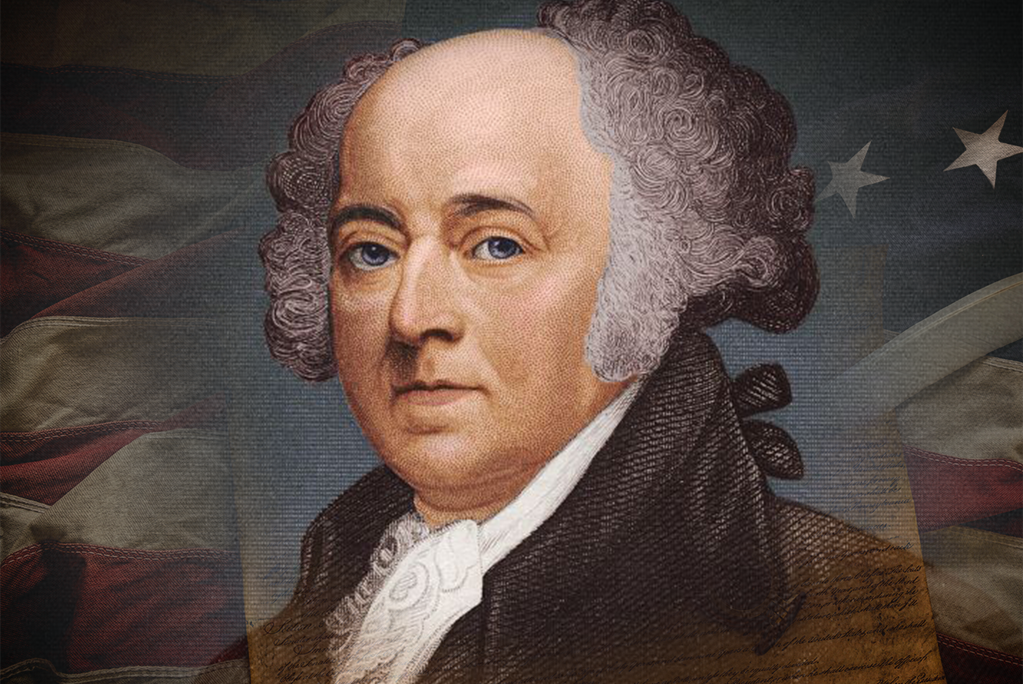John Adams

Portrait of John Adams, Founding Father and second President of the United States
Biography
John Adams was born in 1735 in the Massachusetts Bay Colony to a modest farming family descended from Mayflower pilgrims. A Harvard graduate and devout student of Enlightenment philosophy, he emerged as a relentless voice for independence. With a fierce intellect, principled stubbornness, and an unshakable sense of justice, Adams helped shape the very architecture of American democracy.
Though he opposed British tyranny, Adams famously defended the soldiers of the Boston Massacre—believing that liberty meant nothing if justice wasn’t extended to all. In the Continental Congress, he championed independence, nominated George Washington to lead the Continental Army, and pressed for Thomas Jefferson to write the Declaration of Independence. Adams was, quite literally, at the heart of the revolution.
As a diplomat, Adams was tireless. He helped negotiate the Treaty of Paris to end the Revolutionary War, secured vital loans from the Dutch Republic, and served as the first American ambassador to Great Britain. His political instincts often clashed with peers, but his integrity was never in question. Adams believed government should be strong, balanced, and built to resist tyranny—from without and within.
In 1797, Adams became the second President of the United States, following his often frustrating tenure as Vice President under George Washington. His presidency was defined by efforts to keep the U.S. out of war with France—an unpopular decision that likely cost him reelection. He also signed the Alien and Sedition Acts, which remain a controversial chapter in his legacy.
Adams retired to Quincy, Massachusetts, where he wrote prolifically and famously rekindled a powerful friendship with Thomas Jefferson through letters. On July 4, 1826—fifty years to the day after the signing of the Declaration—he died, unaware that Jefferson had died just hours earlier. His life reminds us: principled dissent, even when unpopular, is the beating heart of a free republic.
John Adams reminds us that leadership is more than charisma—it’s principle, persistence, and the courage to be unpopular. He stood for reason when others wanted rage, for peace when others demanded war, and for truth when others chased applause. In an era of tweets and soundbites, Adams stands as proof that deep thinking, serious reading, and thoughtful dissent are still radical acts of patriotism.
?
Why did John Adams insist on defending the British soldiers after the Boston Massacre, and what does that say about his view of justice?
How did Adams’ personality and principles affect his political career—for better and for worse?
Why do historians describe John Adams as 'indispensable' to the cause of American independence?
What do Adams’ letters to Abigail reveal about their partnership and about life during the Revolution?
How did Adams balance his fear of mob rule with his belief in a democratic republic?
What can we learn from Adams’ struggle to remain independent in a time of growing partisanship?
Would John Adams have enjoyed social media—or hated it? Why?
Dig Deeper
In which John Green teaches you where American politicians come from. In the beginning, soon after the US constitution was adopted, politics were pretty non-existent. George Washington was elected president with no opposition, everything was new and exciting, and everyone just got along.
Discover more

Benjamin Franklin
Printer, publisher, scientist, inventor, diplomat, and philosopher, Benjamin Franklin shaped nearly every aspect of early American life.

Thomas Paine
From 'Common Sense' to 'The American Crisis,' Thomas Paine rallied citizens with radical ideas of freedom, democracy, and equality.

Thomas Jefferson
A philosopher, scientist, architect, and statesman, Thomas Jefferson was the principal author of the Declaration of Independence, the third president of the United States, and the visionary behind the Louisiana Purchase and University of Virginia.
Further Reading
Stay curious!
